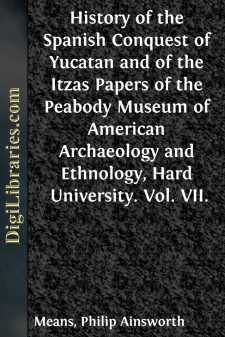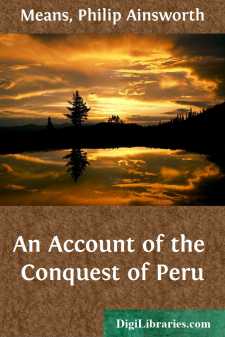Categories
- Antiques & Collectibles 13
- Architecture 36
- Art 48
- Bibles 22
- Biography & Autobiography 813
- Body, Mind & Spirit 142
- Business & Economics 28
- Children's Books 15
- Children's Fiction 12
- Computers 4
- Cooking 94
- Crafts & Hobbies 4
- Drama 346
- Education 46
- Family & Relationships 57
- Fiction 11828
- Games 19
- Gardening 17
- Health & Fitness 34
- History 1377
- House & Home 1
- Humor 147
- Juvenile Fiction 1873
- Juvenile Nonfiction 202
- Language Arts & Disciplines 88
- Law 16
- Literary Collections 686
- Literary Criticism 179
- Mathematics 13
- Medical 41
- Music 40
- Nature 179
- Non-Classifiable 1768
- Performing Arts 7
- Periodicals 1453
- Philosophy 64
- Photography 2
- Poetry 896
- Political Science 203
- Psychology 42
- Reference 154
- Religion 513
- Science 126
- Self-Help 84
- Social Science 81
- Sports & Recreation 34
- Study Aids 3
- Technology & Engineering 59
- Transportation 23
- Travel 463
- True Crime 29
History of the Spanish Conquest of Yucatan and of the Itzas Papers of the Peabody Museum of American Archaeology and Ethnology, Hard University. Vol. VII.
Description:
Excerpt
INTRODUCTION
In the library of the Peabody Museum of Harvard University there is an invaluable collection of photographs of old manuscripts relating to Middle America. These photographs, made by Professor William E. Gates of Point Loma, California, were given to the Peabody Museum by Charles P. Bowditch, Esq., of Boston. One of the volumes contains a photographic reproduction of an original manuscript entitled Relación de las dos Entradas que hizé a Peten Ytza. The author, Fray Andrés de Avendaño y Loyola, of the Order of Saint Francis, will receive much of our attention later. Fortunately Mr. Bowditch and Sr. Guillermo Rivera have deciphered and translated the crabbed old text, so that we have at hand an account of the subjection of the Itzas of Tayasal, or Peten Itza, which is not only invaluable as being the work of an eyewitness of that subjection, but which also is filled with a rare charm. It was largely with a view to bringing this old manuscript to the attention of students that Mr. Bowditch and Dr. Tozzer asked me to work it up into a study of the Itzas of Tayasal. At the same time we must not neglect to notice here the translation, made by Mr. Bowditch and Sr. Rivera, of another inedited work on the same subject. I refer to the account by Fray Alonso Cano, which will be of great use to us later.
Though Avendaño and Cano are, so to speak, the prime reasons for the writing of this study, they have been supplemented in no inconsiderable degree by two other early Spanish writers on the history of Yucatan and its people, Diego Cogolludo and Juan de Villagutierre y Sotomayor. A few comments on the works of these two authors will later prove useful to the reader.
Though Villagutierre's Spanish style is far superior to that of such writers as Fernando Montesinos and Antonio de la Calancha, it is, nevertheless, atrocious. Although he wrote about 1700, Villagutierre's style is excessively archaic; his grammatical construction can hardly be called construction at all, so formless and ambiguous is it. Villagutierre never hesitates to write several long sentences without a single main verb between them, nor does he often refrain from going on and on for a page or so without using a period. In the use of capitals he is most whimsical; usually he has them when they are called for, but he has many that are out of place as well.
The style of Cogolludo, on the other hand, is very good, and that, be it noted, despite the fact that Cogolludo wrote prior to 1688. One remarks with considerable surprise that in several cases Villagutierre and Cogolludo use almost the same words. For example, in speaking of the visit which Cortes made to the island of Tayasal, Cogolludo says: "... y aun la ida de Cortes se tuvo por ossadia, y demasiada confianza...." Villagutierre, in the same connection says: "... que lo tenian a grandissima temeridad, y ossadia, y por demasiada confianza...." This is an interesting point, and perhaps it is significant that Cogolludo's book was published in 1688, whereas that of Villagutierre was not brought out until 1701....



